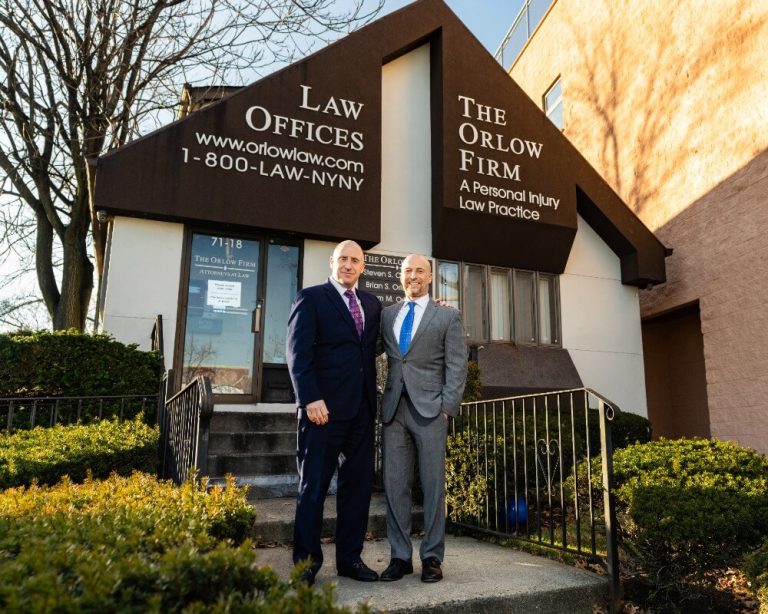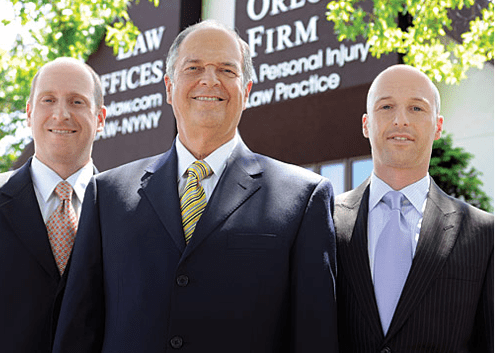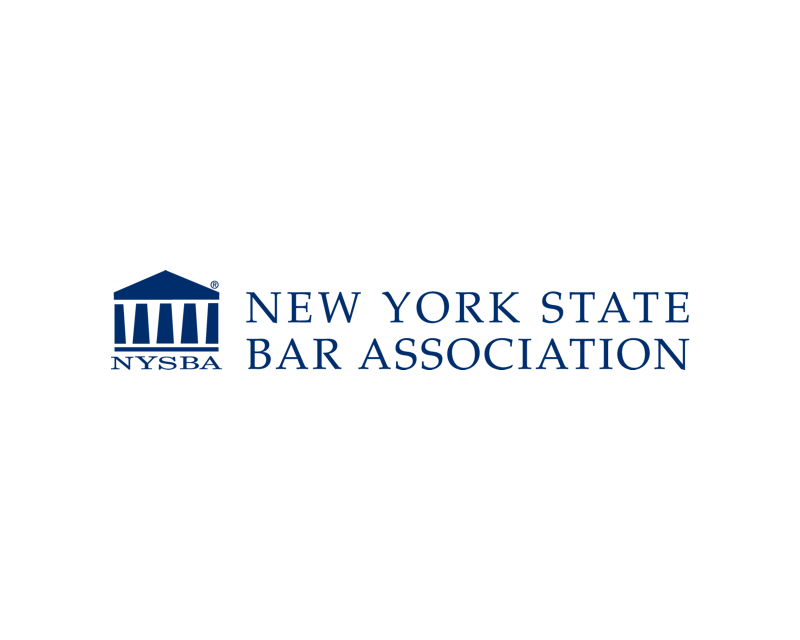The Following People Contributed to This Page
Cindy Cordova is a seasoned legal writer with over seven years of experience crafting clear, informative, and professional content for law firm websites. With a B.A. in English from Trinity Christian College, she combines her strong writing background with a deep understanding of legal topics to help firms connect with their clients through trustworthy and accessible content.
- June 6, 2025
What Is a Tort and How Does It Relate to Personal Injury Law?
Quick Answer: A tort is a wrongful act that causes harm to another person. In New York, most personal injury cases—like car accidents, slips, or medical errors—are based on tort law.
What Are the Different Types of Torts in New York?
In New York, torts are grouped into three main types: intentional torts, negligence torts, and strict liability torts. Each type covers different kinds of harmful actions that can lead to a personal injury case. Understanding the differences can help you know your rights if you’ve been injured in New York City.
- Intentional Torts: These happen when someone harms another person on purpose. Common examples include assault, battery, false imprisonment, and intentional infliction of emotional distress. For instance, if someone physically attacks you in Brooklyn, this could lead to an intentional tort claim in civil court.
- Negligence Torts: These are the most common torts in personal injury cases. They happen when someone fails to act with reasonable care and causes harm. Slip and falls on icy sidewalks, car accidents caused by distracted driving, or medical mistakes in NYC hospitals may all be considered negligence.
- Strict Liability Torts: These apply when someone is held responsible for harm even if they didn’t act carelessly or intentionally. In New York, strict liability often applies to product liability (like when a defective product causes injury) or certain dog bite cases. For example, a landlord in Manhattan could be strictly liable if their illegally owned dangerous dog bites someone.
Some personal injury cases in New York City may involve more than one type of tort. For example, a landlord who ignores building repairs might face a negligence claim if the ceiling collapses and injures a tenant. If that same landlord locked a tenant in a room without their consent during a dispute, there may also be an intentional tort claim for false imprisonment.
Each type of tort requires different evidence to prove. That’s why speaking to a personal injury lawyer familiar with New York law can be helpful in figuring out your legal options. If you believe you’ve been harmed by someone’s actions—or lack of action—in NYC, call The Orlow Firm at (646) 647-3398 for a free consultation.
How Do Torts Affect Personal Injury Claims in NYC?
In New York City, torts play a key role in personal injury claims. A tort is a wrongful act that causes harm to someone. When this harm is due to another person’s carelessness or intentional behavior, the injured person may have a legal right to seek compensation.
Most personal injury claims are based on the idea of negligence, which is a type of tort. If someone fails to act with reasonable care and causes an injury, they may be held legally responsible. This is true whether the injury happens in a car crash, a slip and fall, or due to unsafe property conditions.
Torts affect personal injury claims in several important ways:
- Fault matters: In many cases, the person or company who caused the harm must be proven to be at fault. This includes showing they acted carelessly or didn’t live up to a duty they owed you.
- Evidence is key: To succeed in a personal injury case, you’ll need to show proof of the harm you suffered and how it resulted from the defendant’s actions. This often includes medical records, photos, witness statements, and more.
- Financial recovery: If a tort is proven, you may be able to get compensation for your losses. These can include medical bills, lost income, pain and suffering, and sometimes property damage.
In New York City, personal injury claims from car accidents are sometimes affected by the no-fault insurance system. This means your own insurance usually pays for your medical costs and lost wages, no matter who caused the accident. However, if your injuries are serious enough—like a broken bone or permanent damage—you may be allowed to file a tort-based lawsuit against the person who caused the crash.
Outside of car accidents, torts are involved in many other personal injury cases across NYC. For example, if you slip on a wet floor at a store, or you are injured due to unsafe conditions in an apartment building, you may have a tort claim. These cases often fall outside the no-fault system and are handled through civil court if a settlement cannot be reached.
Understanding how torts affect your personal injury claim can be complex, especially in a fast-paced city like New York. If you believe someone else caused your injury, it’s important to know your rights. Get advice before making decisions about your case by calling The Orlow Firm at (646) 647-3398.
How Do You Prove a Tort Happened in a Personal Injury Case?
To prove that a tort happened in a personal injury case, you need to show that someone else was legally responsible for your injury. In New York City, this often involves gathering strong evidence and following key legal steps. Whether the injury happened from a car accident, a fall, or another cause, the process to show a tort follows the same basic rules.
The Four Elements You Must Prove
In most personal injury cases, you need to prove four things:
- Duty of Care: You must show that the other person or party had a legal duty to act carefully. For example, drivers must drive safely, and property owners must keep walkways safe.
- Breach of Duty: This means the person did not meet their duty of care. A driver who speeds or a landlord who doesn’t fix a broken stair may be breaching their duty.
- Causation: You must prove that their actions or failure to act caused your injury. This includes both the actual cause and a legal connection between what happened and the injury.
- Damages: You must show that you suffered harm. This can include physical injuries, medical bills, lost wages, or emotional distress.
Types of Evidence That Help Prove a Tort
To support your claim, it’s important to collect as much evidence as possible. The right evidence can help show what happened and who was responsible.
- Photos and Videos: Pictures of the accident scene, your injuries, and any damaged property can be powerful in showing what went wrong.
- Witness Statements: People who saw the accident can explain what they saw, helping to confirm your version of events.
- Medical Records: These prove you were injured and show how serious those injuries are, including future treatment needs.
- Police or Incident Reports: These official documents may support your claim and describe what happened.
- Expert Opinions: In some cases, expert testimony is used to explain how the injury happened or how it’s affecting your life.
Example in a NYC Context: Suppose you slipped on a wet floor in a Brooklyn grocery store that had no warning signs. If the store had enough time to clean up the spill but didn’t, and you broke your arm, this may be a tort. You would need to prove the store had a duty to keep the floor safe, failed to do so, caused your injury, and your injury resulted in damages like medical bills or time off work.
Every tort case is unique, and the steps can vary depending on the type of injury and what caused it. That’s why it helps to work with a personal injury lawyer who understands how New York courts handle these claims and what evidence works best. If you’ve been injured in NYC, you can call The Orlow Firm at (646) 647-3398 for a free consultation to discuss your options.
What’s the Difference Between a Tort and a Crime in NYC?
In New York City, it’s important to understand the difference between a tort and a crime. Both involve harm, but they are handled in different ways and serve different purposes.
A tort is a civil wrong. It happens when one person causes harm to another, often by accident or negligence. The person who was hurt—called the plaintiff—can file a lawsuit to seek money for their injuries. The goal in a tort case is to compensate the victim.
A crime, on the other hand, is a violation of the law that hurts society as a whole. Crimes are handled by the government and can lead to jail time, fines, or both. The state brings charges against the person accused of doing something illegal, called the defendant. The goal in a criminal case is to punish the wrongdoer.
Here are some key differences between torts and crimes in NYC:
- Who brings the case: In a tort, the injured person brings the lawsuit. In a crime, the government brings the charges (such as the NYPD or District Attorney).
- Purpose: Torts aim to make the injured person whole, often by awarding money. Crimes aim to punish and prevent harmful behavior.
- Outcome: Tort cases usually result in financial compensation. Criminal cases can lead to prison, probation, or fines.
- Standard of proof: In torts, the injured person must show it’s “more likely than not” that the harm was caused by the defendant. In crimes, the government must prove the case “beyond a reasonable doubt.”
Sometimes, the same act can be both a tort and a crime. For example, if someone assaults you in a Brooklyn park, they may face criminal charges—and you may also sue them for medical bills and pain and suffering in a civil court.
If you’ve been injured in New York City, understanding this difference can help you decide what steps to take next. A personal injury claim (a tort case) can help you get financial support for your injuries—something a criminal case does not provide directly.
To learn how the law may apply to your specific situation, contact The Orlow Firm at (646) 647-3398 for a free consultation. We’re here to help you understand your rights under New York law.
What Damages Can You Recover in a NYC Tort Case?
In a New York City tort case, damages are the money an injured person can recover for the harm they’ve suffered. These damages are meant to help you get back to the position you were in before the injury, as much as possible. The amount and type of damages you may receive depend on the facts of your case and the extent of your injuries.
There are two main types of damages in a tort case: economic and non-economic damages.
Economic Damages
These are costs you can measure using bills, receipts, or pay stubs. They cover your financial losses due to the injury. Common examples include:
- Medical expenses: This can include doctor visits, hospital stays, surgery, tests, therapy, and medications related to your injury.
- Future medical costs: If your injury requires long-term care, you may receive money for future treatment.
- Lost wages: If you couldn’t work after the injury, you may recover the income you lost.
- Loss of future earning ability: If your injury affects your ability to work in the future, you may be compensated for that loss.
- Other out-of-pocket costs: Travel to medical appointments, home health aides, or help with daily tasks may also count.
Non-Economic Damages
These cover the emotional and personal impact of the injury—not just the money you lost. These damages can be harder to measure but are just as important. They may include:
- Pain and suffering: This refers to the physical pain and emotional stress caused by the injury.
- Emotional distress: Anxiety, depression, or post-traumatic stress may qualify for damages.
- Loss of enjoyment of life: If you can no longer enjoy activities you once loved, you may be compensated for that loss.
- Loss of companionship: In serious cases, your injuries may affect your relationships with loved ones.
Punitive Damages
Sometimes, an injured person may also be awarded punitive damages. These are not meant to cover your losses. Instead, they are used to punish the wrongdoer if their actions were especially reckless or harmful. These are rare and usually only apply in severe cases, like intentional harm or gross negligence.
If you or someone you love has been injured in New York City due to someone’s negligence, contact The Orlow Firm at (646) 647-3398 for a free consultation. Our team is here to guide you through the legal process with compassion and care.
How Long Do You Have to File a Tort Claim in New York?
In New York, the amount of time you have to file a tort claim is called the statute of limitations. This is a legal deadline that can vary depending on the type of case. If you miss the deadline, you may lose your right to seek compensation, no matter how strong your case is.
For most personal injury cases in New York, including those involving torts, the time limit is:
- Three years from the date of the injury – This is the standard deadline for filing a personal injury lawsuit based on negligence. For example, if you were hurt in a slip and fall or a car accident, you usually have three years to file suit.
However, some situations have different deadlines. Here are a few important exceptions to be aware of:
- Claims against the City of New York or other government agencies : If your injury involves the city, the MTA, or another public agency, you must file a Notice of Claim within 90 days of the incident. After that, you have only one year and 90 days to file a lawsuit.
- Medical malpractice cases : These have a shorter deadline—usually two years and six months from the date of the malpractice or the end of treatment.
- Wrongful death claims : If a loved one died because of someone else’s actions, you generally have two years from the date of death to file a wrongful death lawsuit.
Some injured people may qualify for an extension under special circumstances, such as when the injured person is a minor or mentally incapacitated. Even then, the rules can be complex, and it’s important to act quickly.
Why acting fast matters:
- Evidence fades : Over time, it becomes harder to gather proof. Witnesses may forget what they saw, and physical evidence can disappear.
- Insurance companies may deny claims : Insurers often use missed deadlines to avoid paying injury claims.
- Your rights could expire : Once the statute of limitations runs out, even a strong case may be dismissed by the court.
Every case is different, and the deadlines can be confusing, especially in lawsuits involving government entities or injuries that aren’t discovered right away. If you’re unsure how much time you have, it’s a good idea to speak to a personal injury attorney as soon as possible.
To get help understanding your deadline and protecting your rights, contact The Orlow Firm at (646) 647-3398 for a free consultation.
FAQs About Torts and Personal Injury Law in NYC
- What is a “tort” in personal injury law?
Torts are wrongful actions that result in harm to another person. In personal injury law, a tort usually means someone was hurt because another person acted carelessly or on purpose. For example, if a driver runs a red light and hits a pedestrian, that could be considered a tort. The injured person may then have the right to seek compensation through a personal injury claim. - Are all personal injury cases related to torts?
Yes, most personal injury cases involve torts. Whether it’s a car accident, a slip and fall, or medical malpractice, the injured party is claiming someone else’s actions—or failure to act—caused harm. These actions don’t have to be criminal to be considered torts. - Do I need to prove someone was at fault to win a tort case?
Yes, in most tort cases you need to show that the other person was negligent. This means proving they owed you a duty of care, they failed in that duty, and that failure caused your injury. For example, a store has a duty to keep floors dry. If they don’t and you slip, that may be negligence. - Can I file a tort claim if I was partly at fault?
Yes. New York follows a rule called “comparative negligence.” This means you can still get compensation even if you were partly at fault. However, your award may be reduced by your percentage of fault. For example, if you were 20% at fault, your compensation might be reduced by 20%. - What kinds of torts can happen in New York City?
In NYC, common torts include:- Car Accidents : Often caused by distracted or reckless drivers.
- Slip and Falls : Can happen due to unsafe conditions in stores or on sidewalks.
- Medical Malpractice : Occurs when a healthcare provider makes a serious mistake.
- Assault : A case where someone is hurt on purpose.
- What is the difference between a tort and a crime?
A tort is about harm between people, like one person suing another for an injury. A crime is handled by the government and involves breaking the law. You can have cases where one act leads to both—a person could be charged with assault (a crime) and also be sued in civil court (a tort) by the victim. - Is there a time limit to file a tort claim in NYC?
Yes. In most New York personal injury cases, you have three years from the date of the injury to file a claim. But deadlines can be shorter in some cases—like when suing a city agency or if the injured person is a child. It’s important to talk to a lawyer right away so you don’t miss your chance. - What types of damages can I get in a tort case?
You may be able to recover:- Medical bills from doctor visits, treatments, or hospital stays
- Lost income if you missed work due to your injury
- Pain and suffering for physical and emotional distress
- Property damage , like car repairs after a collision
- Can I sue the City of New York if the government caused my injury?
Yes, but the rules are stricter. You must file a “Notice of Claim” within 90 days of the incident before you can sue. This can happen in cases like injuries on city sidewalks or subway stations. Missing these deadlines may harm your case. - Do I need a lawyer to file a tort claim?
You are not required to have a lawyer, but having one can help. Personal injury law involves many rules and deadlines. A lawyer can guide you, gather evidence, and work to get you fair compensation. If you have questions, call The Orlow Firm at (646) 647-3398 for a free, private consultation.
Contact The Orlow Firm for a Free Consultation on Your NYC Tort Case

If you’ve been injured in New York City and believe it may involve a tort, connecting with a lawyer can make a big difference. At The Orlow Firm, we offer a free consultation to help you understand your rights and options under personal injury law.
A tort is a legal term for a wrongful act that causes harm to another person. This can include car accidents, slip and falls, or even cases involving assault. If someone else’s actions—intentional or careless—caused you harm, you may have a valid tort claim.
During your free consultation, we’ll talk with you about what happened, what injuries you’ve suffered, and how your life has been affected. We’ll explain in plain English whether you might have a tort case under New York law, and what steps you may need to take.
Here’s what you can expect when you contact The Orlow Firm:
- Free, no-obligation consultation to discuss your potential claim
- Clear explanations of the legal process and your rights
- Answers to questions about compensation, timelines, and legal options
- Compassionate guidance tailored to your specific situation
We know the legal system can feel overwhelming, especially when you’re trying to heal. Our attorneys aim to make the process easier by offering honest, dependable support from the start.
If you were injured in an accident or harmed by someone’s actions in New York City, don’t wait to learn more about your legal options. Call The Orlow Firm at (646) 647-3398 to schedule your free consultation today.
The Following People Contributed to This Page
Cindy Cordova is a seasoned legal writer with over seven years of experience crafting clear, informative, and professional content for law firm websites. With a B.A. in English from Trinity Christian College, she combines her strong writing background with a deep understanding of legal topics to help firms connect with their clients through trustworthy and accessible content.










